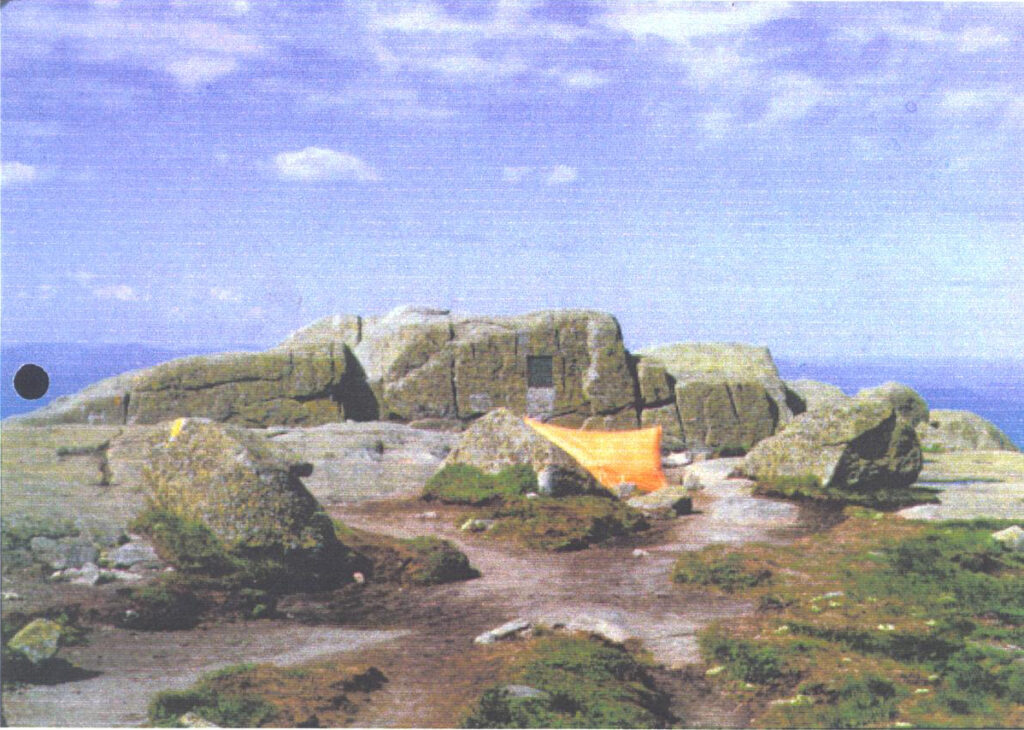Alpine Stewardship
Alpine Stewardship
By Bobby Clark
No one can deny that it feels incredible to hike to the top of an Adirondack High Peak and gaze out upon a beautiful view stretching towards the horizon. But if you take the time to look down, another beauty reveals itself at your boot laces and stretches out across the mountaintops.
Here resides the rare and endangered alpine plant community, including mosses, lichens, sedges, dwarf shrubs, and vibrant wildflowers that covers 173 acres across twenty-one of northern New York’s highest summits. Remnants from the retreating glaciers of the last ice age, these resilient plants can survive below freezing temperatures, hurricane force winds, thin acidic soils, and short growing seasons. They can’t survive human footsteps.
With an increase in the popularity of backpacking starting in the 1960s, the Adirondacks’ fragile alpine ecosystems were in danger of being loved to death. Enter Ed Ketchledge, then president of the Adirondack Mountain Club and a professor at the SUNY College of Environmental Science and Forestry who had been studying High Peaks ecology since working on his masters in 1949. “Ketch,” as he was commonly called, wanted to do something.
In 1971, he initiated a summit restoration project in which he introduced non-native grass species to the summits. These species helped to hold the thin soil in place, allowing native alpine plant species an opportunity to recover. These initial reseeding efforts were largely unfunded and carried out with volunteers from ADK and the Adirondack 46ers.

While Ketch was up on the summits, he educated the public about this special ecosystem, these islands in the sky. His education efforts proved extremely fruitful. The more people who knew, and the more they knew, about these alpine plants, the more they wanted to do their part to protect them. In 1989, talks of a formal education program began between the New York State Department of Environmental Conservation (DEC), ADK, and the Adirondack Chapter of The Nature Conservancy (TNC), along with other invested organizations. From these talks the Adirondack High Peaks Summit Stewardship Program was born, a partnership between the three organizations. The DEC received written comments suggesting that resources could be better used elsewhere in the Adirondack Park; Ketch “collegially yet contrarily” was eager to prove them wrong.
Two stewards were hired for the summer of 1990. They were stationed primarily on Mt. Marcy and Algonquin Peak, given those summits typically saw the most traffic and had the largest acreage of alpine plants. The stewards were expected to engage with everyone they could.
Their message was simple, asking hikers to walk specifically on the bare rock, a much more durable surface than the surrounding fragile soil with its alpine plants. Their primary goal was strictly to educate the public, not act as law enforcement for the region. This would help ensure positive feedback from hikers.

In addition to hiking to the summits each day and long days educating the public, these stewards—like summits stewards today—had to contend with many of the same extreme weather conditions as the alpine plants they were there to protect. The cost of each steward that first season was $3330, patched together by TNC, ADK, and donations before regular funding was contributed by all partners.
Since that first year, the program has grown immensely. In recent years, summit stewards may interact with several hundred visitors in a single day. The program now hires one full-time year-round coordinator and six seasonal staff, and recruits the efforts of twenty-five volunteers. Every five to six years a botany steward and photopoint monitoring field tech are brought onboard for specific research projects.
Due to Ketch’s initial efforts and the program’s continuing education, vegetation has recovered extremely well. The photopoint monitoring project consists of trailside vegetation plots above treeline that have been monitored every five years since 1999. These photos offer evidence of the powers of education and what can be achieved by those willing to go above and beyond to protect our wild spaces.
Spread across the more than thirty years the program has been in operation, summit stewards have educated over half a million people and their efforts have proven a true Adirondack success story. While this successful program has many generous donors, more help is always needed, especially as our summits face their next big challenge: climate change. You can “be a rock star” and help protect Adirondack alpine summits.
Bobby Clark is co-author of ADK’s Peaks and Ponds. Published during ADK’s centennial year (2022), bits of ADK and Forest Preserve history are included throughout this collection of Adirondack day hikes.
Support Summit Stewards
Related
Summit Stewards Reflect on 2023 Season
November 6, 2023 — Lake Placid, NY — In its end of season report, the […]
Extirpated Alpine Plant Discovered on Algonquin
August 29, 2023 — Lake Placid, NY — The Adirondack High Peaks Summit Stewardship Program […]
Summit Stewards Release 2023 Mid-Season Report
July 24, 2023 — Lake Placid, NY — In its mid-season report, the Adirondack High […]
Keeping the Life List
By Kevin Berend Every serious birder keeps a “life list,” a total count of all […]

